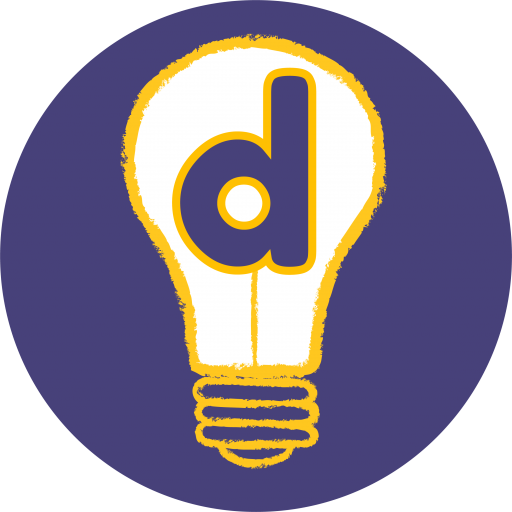Picture this: you’re at a friend of a friend’s flat-warming. There’s an underwhelming selection of supermarket nibbles on paper plates and your host is stress-eating Pringles straight from the tube. There are two specific personalities at this party, and watching how people respond to each of them tells us something fascinating about learning.
First, there’s The Prig—who, true-to-form, is holding court by the vol-au-vents. Just listen as they speak with unwavering certainty about the “correct” way to handle ChatGPT in education, the foolproof detection methods, and the essential policies every institution needs. Turns out, they’ve mastered the instruction manual for AI-proofing assessment and, God help us, they’re going to read out every page to you.
Why best practice is a prig
The Prig is the living embodiment of ‘Best Practice’—and despite their impeccable credentials and redoubtable expertise, you’re thinking a selection of uncharitable thoughts and backing towards the nearest door…

Meanwhile, in another room, another person is talking just as animatedly, but they’ve drawn a crowd.
“Right, you’ll never guess what happened to me this week…” they begin, and suddenly everyone’s leaning in. “So I’m marking essays—yeah, I teach, don’t look so surprised—and I spot one that’s clearly been ChatGPT’d. But here’s the thing: it’s from a student who’s working two jobs, caring for elderly parents, and still showing up to every seminar. Do I fail them for academic misconduct, or do I find another way to address this? What would you have done?”
This is Scenario-Based Learning personified—not a know-it-all but a bit of a ‘Fleabag’ who trusts you enough to figure things out for yourself.
Fleabag is that brilliant, achingly honest BBC series where Phoebe Waller-Bridge’s imperfect protagonist navigates life’s lessons with humour and self-awareness. As role-models go, Fleabag is no one’s paragon, but she excels at role-modelling the importance of engagement. Fleabag doesn’t have the answers. Fleabag makes mistakes and her knowledge is incomplete and partial, but unlike the Prig in the kitchen, we want to spend more time in her company, not less.


Why we retreat from best practice
In our webinar “How Scenario-Based Learning Delivers the Skills that Matter,” Phil and I explored this curious paradox. Why do we instinctively retreat from paragons of perfection? And why, despite knowing their advice might be sound, do we so rarely follow it?
“Best practice approaches often function as a full stop…It creates the illusion that learning is complete once the correct method has been identified.”
Phil went further: “I think best practice produces resistance in learners.”
That resistance has a name: reactance. Despite being a well-documented psychological phenomenon, it’s rarely acknowledged as the learning barrier it actually is.
Reactance theory, first developed by psychologist Jack Brehm in the 1960s, describes our fundamental psychological need to maintain autonomy. When we perceive that our freedom to choose is being threatened, we experience an uncomfortable motivational state that drives us to restore that freedom. We don’t just passively resist—we actively push back.
The mechanism is as predictable as it is powerful. Tell someone they must do something a certain way, and they’ll immediately start cataloguing reasons why it won’t work for them. Present a solution as the only correct approach, and they’ll become remarkably creative in finding alternatives. Insist that your method is foolproof, and they’ll take it as a personal challenge to find the fool in it.
This is more than simple stubbornness—it’s a fundamental feature of human psychology. We are meaning-making creatures who need to feel that our choices matter, that our context is understood, that our autonomy is respected. Strip away that sense of agency, and we’ll fight to get it back.
But what if, instead of constraining choice, we expanded it? What if, instead of presenting solutions, we presented problems?
“Scenarios generate engagement through conflict,” Phil explains in the webinar, drawing from storytelling principles. “Stories come from characters, and stories begin at the point where you put two characters into conflict with each other.”
While The Prig presents a world where everything works smoothly according to prescribed rules, scenarios thrive on problems, complications, and competing priorities—the messy reality where our judgement actually matters.
This approach works because effective scenarios “let people off the hook” by creating psychological safety: “People feel invested in it because they see it’s relevant, but it also gives them permission to have a go and also permission to fail. If it doesn’t work, it doesn’t matter.”
The psychological shift from constraint to choice, from prescription to invitation, from certainty to productive uncertainty, changes everything about how learning feels. Instead of our autonomy being threatened, it’s being exercised. Instead of being told what to think, we’re being asked to think.
Phil captures this perfectly when he explains why we’re drawn to flawed characters over perfect ones: “We are more drawn to things that perhaps are closer to our own more imperfect selves.”
[Pause. Look directly at the camera.]
Right, so we’re about to present you with “Five Key Takeaways” from Tony and Phil’s webinar—which is, let’s be honest, exactly the kind of best practice packaging we’ve just spent 1,500 words explaining why you’ll instinctively resist…

Five key takeaways about scenario-based learning
1. Best practice is a full stop, but scenarios are a quesiton mark: Best practice approaches often function as a full stop, creating the illusion learning is complete. Scenarios keep the conversation going by presenting problems that demand active thinking.
2. Conflict drives engagement: Stories begin at the point where you put two characters into conflict. Perfect solutions are boring. Messy dilemmas with competing priorities stick in our minds and mirror real professional life.
3. Scenarios build functioning knowledge: Traditional curricula miss the crucial skills—navigating ambiguity, making ethical decisions, adapting to change. Scenarios develop this knowledge by forcing learners to apply expertise in messy, imperfect situations where it actually matters.
4. Scenarios make learning personal, not universal: Generic scenarios feel abstract and trigger the “yeah, but that won’t work here” response. When scenarios reflect learners’ specific context—their industry, culture, and challenges—they feel immediately relevant and actionable.
5. Intentionality beats implementation: Don’t just add scenarios because you’re reading this thinking “scenario-based learning is best practice for avoiding reactance.” Be clear about what specific skills and mindsets you’re developing, or your scenarios will function as set-dressing not as the actual learning experience.

Experience it for yourself
Our PGDip in Learning Design Methods provides a pathway that practices what it preaches. The programme doesn’t simply tell you about learning design—it invites you into a 14-week scenario where you wrestle with the challenges firsthand, developing the kind of functioning knowledge that emerges when theory meets the hot mess of real-world practice.
Want to become a qualified learning designer?
We run a PGCert, PGDip and MA in Creative Teaching and Learning Design.




